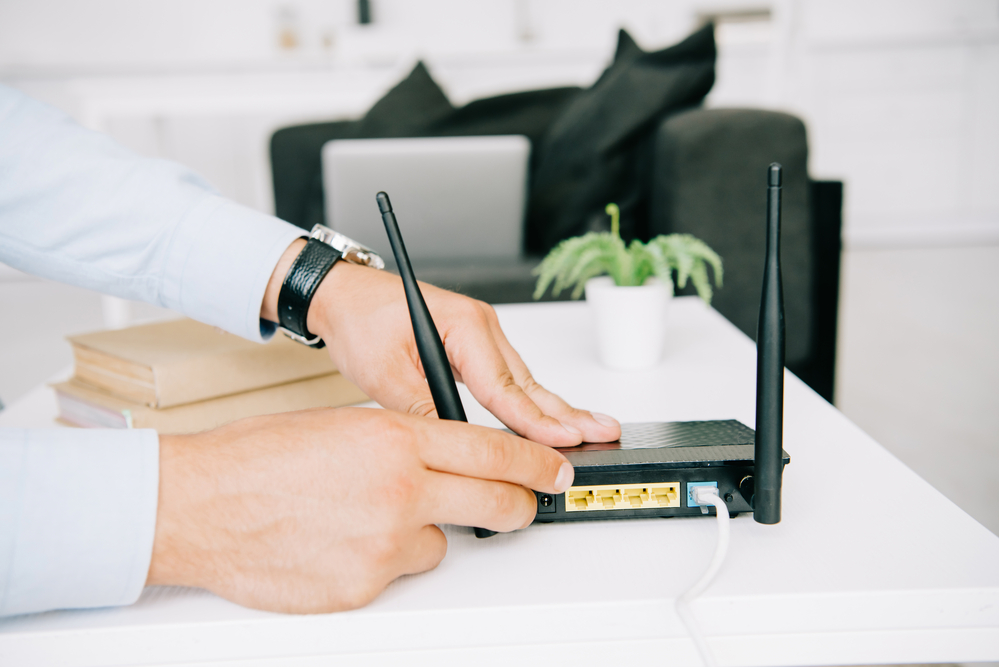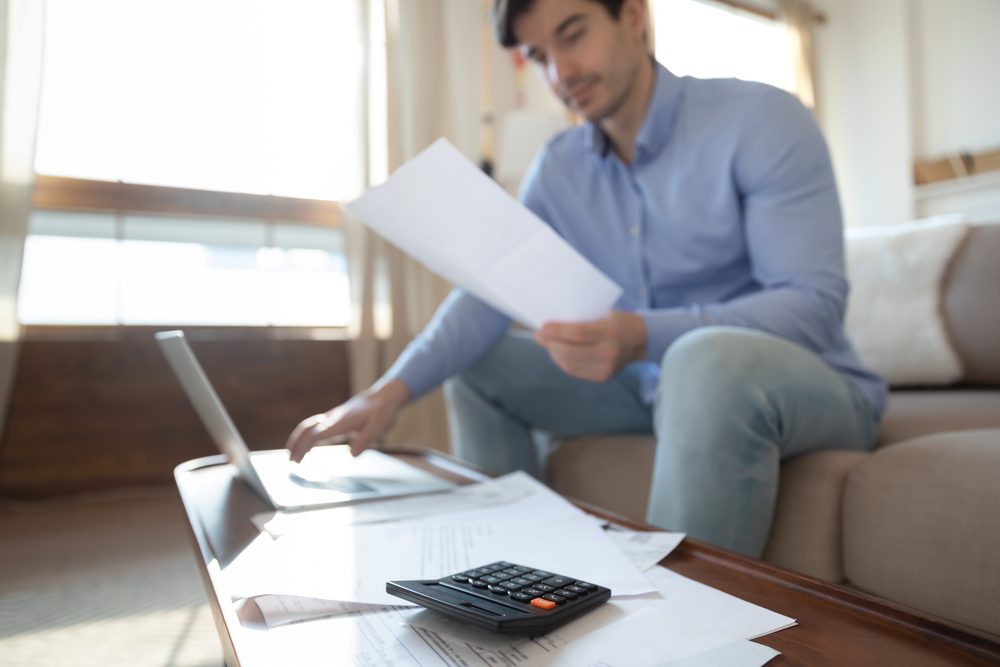A white envelope drops at your doorstep, or a bill summary finds its way to your inbox, putting you into panic mode.
Don’t be alarmed, though: we’ll go through that Dutch utility bill together. 🤝
Utility bills are a mandatory addition to any adult’s life that no one really asks for. It’s the sign of adulthood that we wish we could just sweep under the front door’s mat, but alas, we need those bills paid to live.
We’ve partnered up with the team of experts at PartnerPete to bring you the must-know information on handling your Dutch utility bills. Their team provides internationals with a streamlined utility website in English and for free! 💁♀️
Reading, let alone going through bills, is always a cumbersome chore — so here are five easy steps to handling your Dutch gas, water, electricity, and other utility bills!
1. Orientate yourself on the types of utility bills in the Netherlands
Whether it’s a water bill, electricity, or cellphone, the type of bill you have in your hands will determine the best strategy to go about understanding and paying that bill out of your way.
Gas and electricity bills in the Netherlands
When it comes to gas and electricity (together known as energy) bills, know that these will take the biggest chunk out of your monthly budget, so account for it and set it aside.
First, you have a network operator (netbeheerder), who is determined by your place of residence. In total, the Netherlands has seven grid operators based on region, and you usually have the same one running gas and electricity (energy).

No idea who that is? Enter your address through mijnaansluiting (my connection) to find out who’s responsible for keeping gas and electricity flowing your way.
Secondly, the Dutch energy market is privatised, meaning that (unlike your network operators) you get to choose between many (45+) regional energy suppliers — they are who usually bill you. 🤑 These suppliers are obligated to give you personalised offers on their energy contracts, so you get to pick, choose, and switch to whichever fits you best.
What is a personalised offer? As a prospective customer, your energy supplier is required to present you with a tailor-made contract offer (het aanbod op maat) with a bill estimate based on your energy consumption, your last annual statement, your lifestyle, and any possible welcome offers. It’s a great way to prepare for expenses ahead of time. 💸
When you pay your supplier, the total sum combines your energy consumption rate, grid management fees (which go to the operator company), plus taxes. Each year, you’ll receive an annual statement displaying all the numbers and figures clearly marked. This also means that you may be charged more or less depending on your address, as municipal taxes differ.

Energy supplier vs. network operator: Is there a difference between these two? Why yes! You sign your contract and get billed by your chosen energy supplier, but a network operator is there to ensure you’re supplied with gas and electricity safely through thick and thin. They’re also responsible for any maintenance or extensions within the grid.
The average energy bill in the Netherlands runs between €100 to €150 per month depending on your usage of kilowatt per hour for electricity (kWh) and cubic metre (m3) for gas consumption. For example, a solo international living in Amsterdam will pay between €1,200 to €1,500 annually, based on usage of 1,500 kWh of electricity and 1,000 m3 of gas.
READ MORE | 10 dang smart ways to save on energy costs in the Netherlands
Oh! And don’t freak out if you see two separate bills slide through your mail for energy. Although not very common, sometimes you get billed by your supplier and your network operator (netbeheerder) separately.
Note: While we aim to make these estimates as accurate as possible, gas prices in the Netherlands are continuing to rise.
Water bills in the Netherlands
We’re sure it’s been awesome drinking tap water in the Netherlands but know that annual-based taxes will apply to this Dutch utility bill too.
Water bills and providers in the Netherlands are pretty straightforward: since it’s not a privatised sector, the provider is based on your address, where you’ll land within one of the 10 water districts. As for your bill, it will be calculated based on the amount of water you’ve used (measured in cubic metres) in addition to taxes.

The bill will, therefore, depend on how many people you live with, or in other words, your collective consumption. Generally speaking, account for €150 annually per person.
Wondering who your water provider is? Simply enter your zip code through this handy tool to find out.
Internet and phone bills in the Netherlands
Who said utilities are limited to the gas, electricity, and water giants? The WiFi is a big deal too! There are many internet providers scattered throughout the Netherlands — although, depending on your address, you might be limited to a certain few.

Where you live also determines which connections are available for you to power up your place with the blessing that is the internet: DSL, cable, or fibre.
READ MORE | Fibre optics in the Netherlands: getting the fastest internet in Amsterdam and beyond
As for phones, having a landline in the Netherlands (although an unlikely choice) is still an option. ☎️
Cellphone (mobile) services and their bills in the Netherlands are often clustered in a bundle with the internet (or cable TV, if any) for the convenience of having everything billed at once by one provider.
2. Understand your Dutch utility contract
Understanding what type of Dutch utility contract you have (or plan to switch to) is key to figuring out how the billing process works for you — and that applies to each of the utilities you sign up for.
An advanced instalment system
The majority of main Dutch utility bills (energy, water, and electricity) are based on an advanced instalment basis, meaning that you pay part of your annual energy or water bill every month in an amount that your supplier predetermines.
How is that amount determined? Your supplier takes multiple factors into account, such as your personal consumption in recent years, current prices — and whether those might be going up or down.
Money-saving tip: Would you like to pay less for your electricity during off-peak hours? We thought so too, so make sure that your contract is based on a double rate and not single-rated.
At the end of the year, your supplier only calculates how much of these utilities you have used within the year — turning those payments into advanced payments on your annual statement. That leaves you with three different scenarios:
- If the amount of the 12 instalments you paid throughout the year equals the amount on your annual settlement, no further payments will be asked of you.
- If you come out short, and your annual statement reflects more than what you paid throughout 12 months, then you’ll owe your energy company a check for the difference.
- If you paid your utility company more than what you used, good news! They’ll either refund you or they’ll transfer the excess to the next year. 💰
A flat-rate contract
If you have a flat-rate contract, you’ll pay the same rate for the duration of the contract — no matter the rise, fall, or prices that follow, providing you with sort of a price guarantee. This type of agreement is a portable option for delivery costs from energy companies and for various mobile phone or internet contracts where you essentially pay per plan.
- Pros: When it comes to energy-based flat rate delivery cost agreements, although these contracts tend to be more expensive, they do, however, offer to protect buyers from sudden price hikes.
- Cons: The downside in the energy realm, however, is that they cannot take advantage of lower rates when prices drop, so that’s one thing to consider when mulling over such a contract.

Mobile phone contracts
These contracts are generally flat rate based, depending on two factors: whether you’ll be paying for the sim card only or if you’re signing a contract for multiple services in one combo, such as getting an internet contract in addition to a cellphone one.
Money-saving tip: Watch out for those “new customer deals” where the exciting and overly generous offer only lasts for a month or so. You’ll likely be stuck paying a hefty amount for the remainder of your contract!
Variable-rate contract
Also most commonly seen in energy contracts for delivery costs, this type of agreement allows for a maximum of two annual rate changes (usually on January 1 and July 1) within the duration of the contract.
- Pros: With a variable-rate contract, you can benefit when the energy prices become lower
- Cons: Change could be good or bad. So if the energy prices go higher, customers of this type of contract will be affected accordingly.

3. Know your municipal extras in the Netherlands
Aside from national and regional influences on your bill, the municipality of your residence in the Netherlands also plays a role in determining some of the details on that Dutch utility bill sliding through your mail slot. Those fees are referred to as municipal taxes or Gemeentebelasting.
The best way to learn about those taxes and review their annual rates is by visiting your municipality’s website directly. Here are some of the main ones:
An example of municipal extras would be Amsterdam’s water authority tax, a water maintenance fee that’s enforced in other municipalities as well, but within this region is enforced by the assigned water operator, Waternet.
With this tax, the cities provide clean water supply through your tap and prevent flooding — two key aspects of life in the Netherlands.
Additional (billable) services in the Netherlands
Although these bills are separate from your utilities, they do come in as a bundle of services provided by your municipality.
Take, for example, waste management or sewage maintenance fees: These are two of many examples of services that are provided by your township that you’ll be billed for in the form of a municipal tax.
4. Keep an eye on the meter
It’s an unappealing step, especially if the meter is stuck between rusty pipes somewhere dark and damp — but all things aside, it’s a simple and occasional task that can save you money in the long run.
For starters, you’ll occasionally (sometimes on an annual basis) be asked to do a personal meter reading with someone on the phone or to complete documents by the water or energy company or even your municipality.

Being able to read your meter will also save you from future bill shocks since the tiny screen numbers can give you a clear idea of what your upcoming bills will look like.
Although a large portion of metres in the Netherlands reports accurate and automatic consumption to the provider companies, if you notice inaccurate meter reportings, you can always take the issue up with your supplier, as you could be paying more than you should.
Different kinds of metres
The easiest way to learn how to read a meter is to look up the manufacturer and the type of meter you’re looking at — whether it’s a smart metre, gas, electricity, or water.
Gas and water metres are usually mixed together since they report in the same unit (m3), so pay extra attention to these two: the gas metre is usually larger, whereas the water one is usually round-shaped.
PartnerPete has a handy-dandy guide on reading Dutch metres (with pictures! 🤩), so make sure to check it out for additional visual guidance.
5. Know your resources, rights, and obligations in the Netherlands
Even if you’re familiar with handling your utility bills, life can happen, and emergencies could occur. For those tough breaks, it’s better to acquaint yourself with the best resources out there. 👇
Filing complaints against your Dutch gas or electricity provider
So what happens if your provider changes something without notifying you or calculates your bill based on an inaccurate read? Well, the good news is that you, as a customer, can file a complaint to the Dutch Authority for Consumers & Markets (ACM).
After notifying your provider and operator (netbeheerder) of the complaint, you’ll either receive a suggestion with a solution or a clarification. If you’re still not satisfied with the answer, you can escalate with a formal complaint through the Dutch Foundation for Consumer Complaints Boards.
What happens if you can’t pay your Dutch electricity or gas bills?
If you believe you cannot pay your bill on time, you must notify your supplier ahead of time to prevent your energy from being cut off.
Additionally, the ACM created a sample letter for you to request help from your energy supplier. They might be able to arrange a payment plan option for you to pay your bill in instalments.
Dutch National Assistance line
Here’s some knowledge to save for rainy days. In case of electricity, gas, or metre problems, such as suspected leaks, you can call (+31)08009009, a 24-hour national number for assistance.
Keen to know more? PartnerPete can help you find the best utility prices and contracts — obligation-free — with rates that match those in the market but with friendly customer service. 🎯 Get in touch with them today!
Those were our greatest of all-time hits on how to handle your Dutch utility bills like a pro in five simple and easy steps. So go on and face that fresh bill you’ve been obsessing over. You got this! 💪
Do you know of any more handy tips on taking control of Dutch utility bills? Spill them in the comments below!
Editor’s Note: This article was originally published in March 2022, and was fully updated in August 2023 for your reading pleasure.
You completely missed out “dynamic energy” contracts for gas and electric….
It is a super system… they buy elec and gas from all over europe and deliver it to the supplier. I now pay approx 10c per kWh.. but every hour it can change (you can see in the app when is best to charge your car). Sometimes they even pay me to use electric… last week for 4 hours I was getting 25cents per KWh…from them.. (helps to balance the grid).
This is a major change in energy supply and very surprised that you didnt cover it.
I cut my electric bill by 50% just by switching to Dynamic energy (EnergyZero).